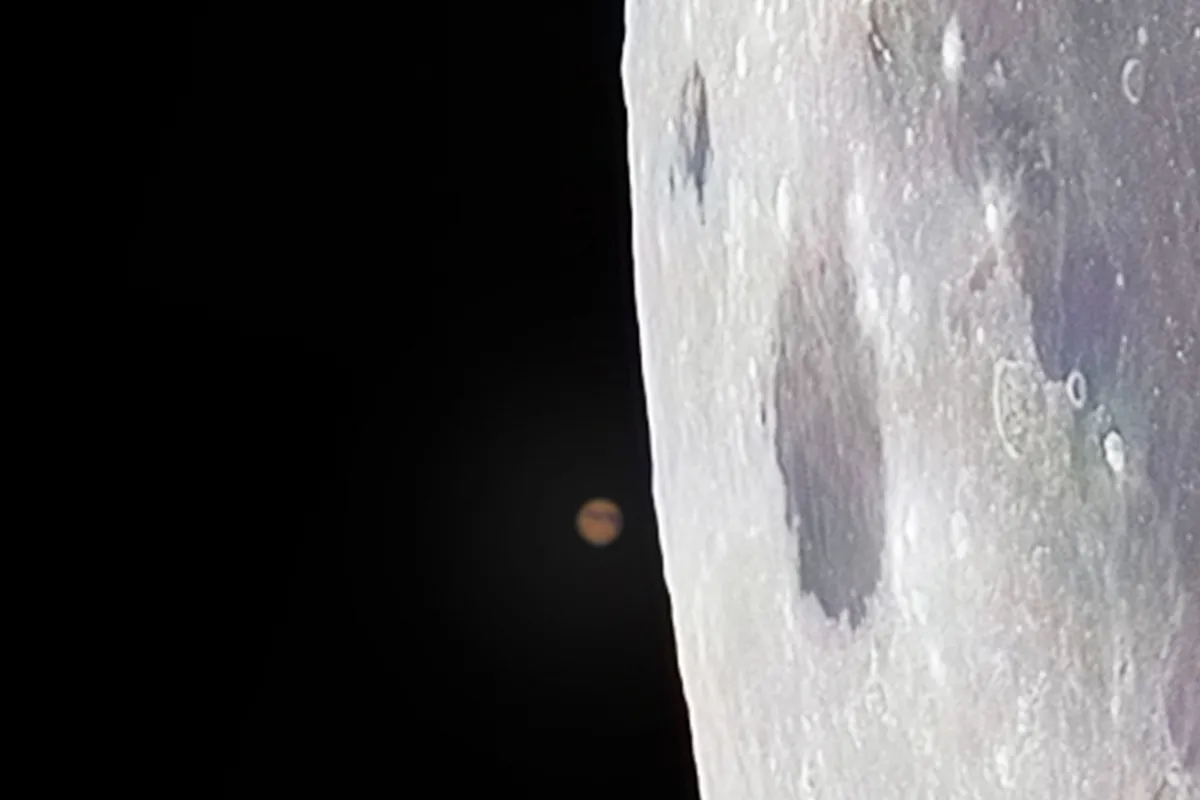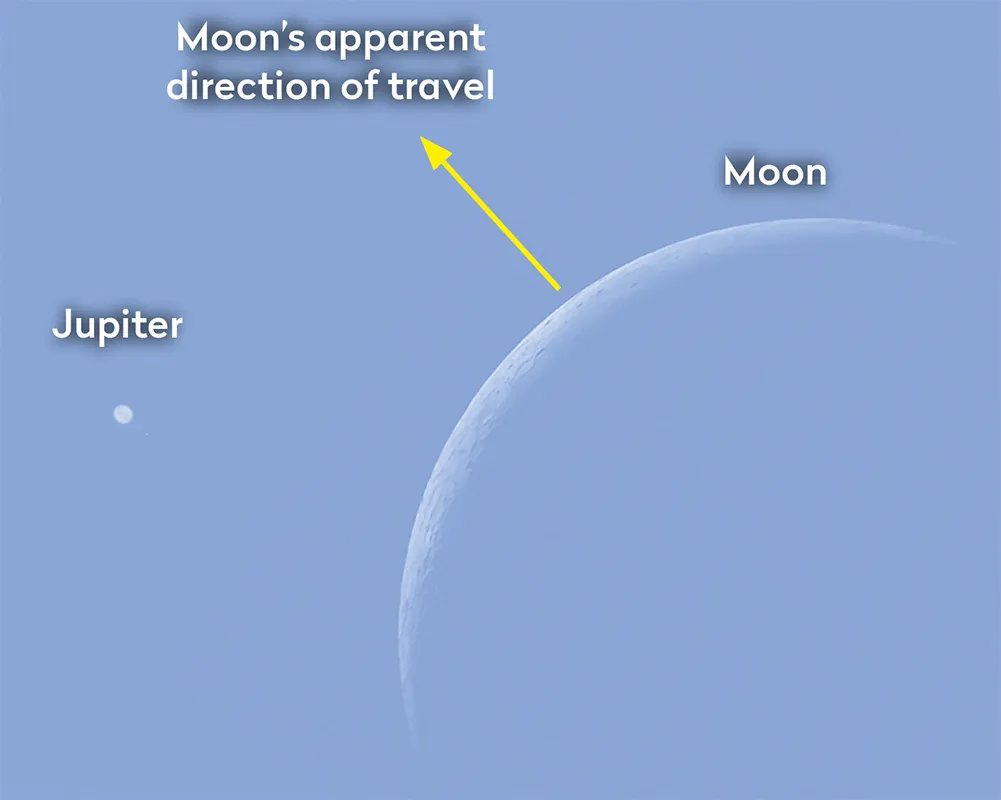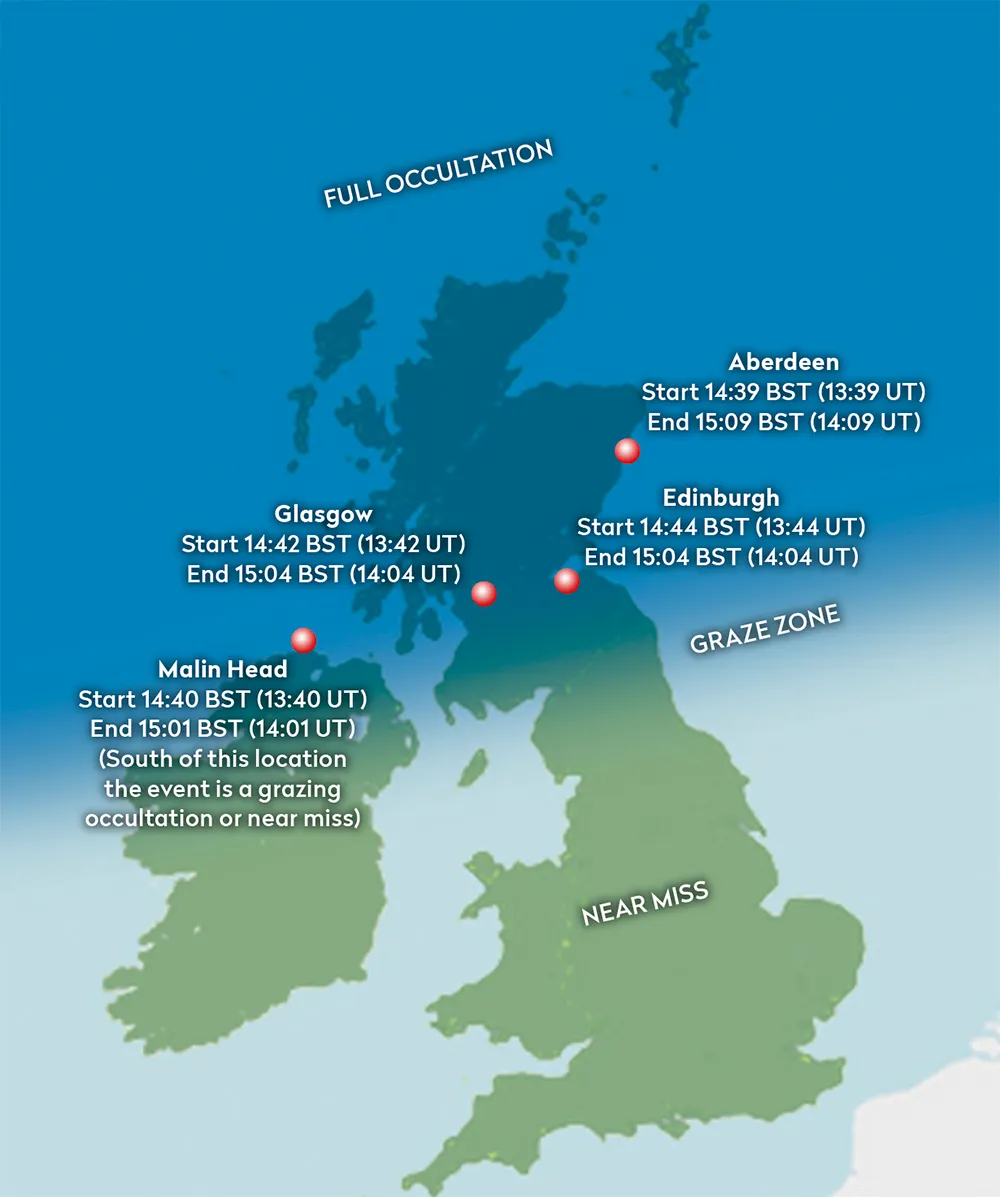Everyone in the UK will be able to enjoy a wonderful interaction between Jupiter and the crescent Moon on 17 May, as the gas giant planet passes close by our natural satellite.
However, observers in Northern Ireland and the north of Scotland will be treated to something very special indeed: a lunar occultation of Jupiter, whereby Jupiter will appear to pass behind the Moon.
The best time to observe the event will be 17 May from 11:30 BST (10:30 UT) through to 15:30 BST (14:30 UT).
Read our guide on how to calculate and observe lunar occultations
How to see the lunar occultation of Jupiter

Lunar occultations of planets aren’t very common at all.
If you’ve been following events over the past few months, you might question this statement seeing as there have been three recent lunar occultations of Uranus and a lunar occultation of Mars visible from the UK.
However, delve back before the first event, the lunar occultation of Uranus on 14 September 2022, and there weren’t any for several years before that.
This month there’s a very rare lunar occultation of Jupiter, an event which comes with a couple of catches.
Jupiter is a morning planet currently, not particularly well-placed and rising just 50 minutes before the Sun, mid-month.
As it pops up above the east-northeast horizon on the morning of 17 May, it will be accompanied by a slender, but quite visible 7%-lit waning crescent Moon.

From the UK, the Moon will appear 5° to the right of mag. –1.9 Jupiter. 50 minutes later the Sun will rise and, if the weather is kind, the sky will turn bright blue.
At this point, you’re probably anticipating the first catch: the occultation occurs during daylight hours from the UK.
Having said this, it’s still a perfectly feasible observation, although it will lack the spectacle of a nighttime lunar occultation of a bright Jupiter.
The Moon will be visible to the naked eye given cloud-free skies, but being a relatively thin crescent, it may need a bit of work to find.
The pair are due south at 47° altitude from central regions of the UK at 11:24 BST (10:24 UT) on 17 May.
This is a good time to try for the Moon using a telescope on a driven equatorial mount.
The Sun is only 27° away though, so if you’re using binoculars or the naked eye to locate the Moon, take care and do so in the shadow of a house, fence or some other opaque obstruction that leaves the region to the right of the Sun clear.
Observing the Sun with the naked eye or - worse - through binoculars or a telescope can seriously damage your eyesight. If in doubt, don't attempt it!
At 14:30 BST (13:30 UT), Jupiter will appear like a ghostly echo of its nighttime self, close to the Moon’s southern edge.

Now for the second catch: the occultation can only be seen from the north of the UK, mostly from Northern Ireland and Scotland.
Those living in the fuzzy ‘graze zone’ may see Jupiter partly occulted by the Moon’s limb, while those further south will witness a near miss.
Approximate timings for various locations are shown on the map above, observing being recommended from 14:20 BST (13:20 UT) through to 15:20 BST (14:20 UT).
This guide originally appeared in the May 2023 issue of BBC Sky at Night Magazine.
